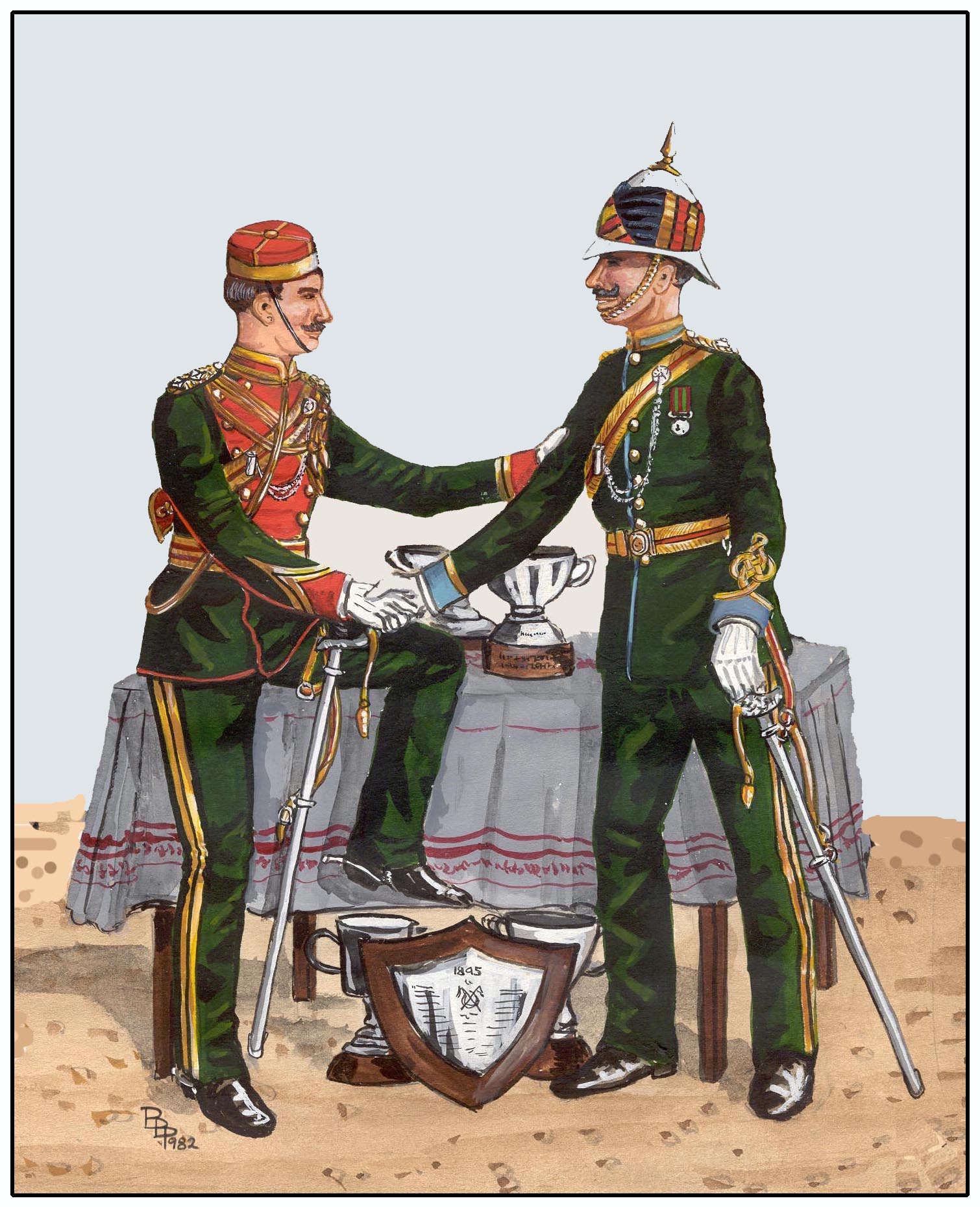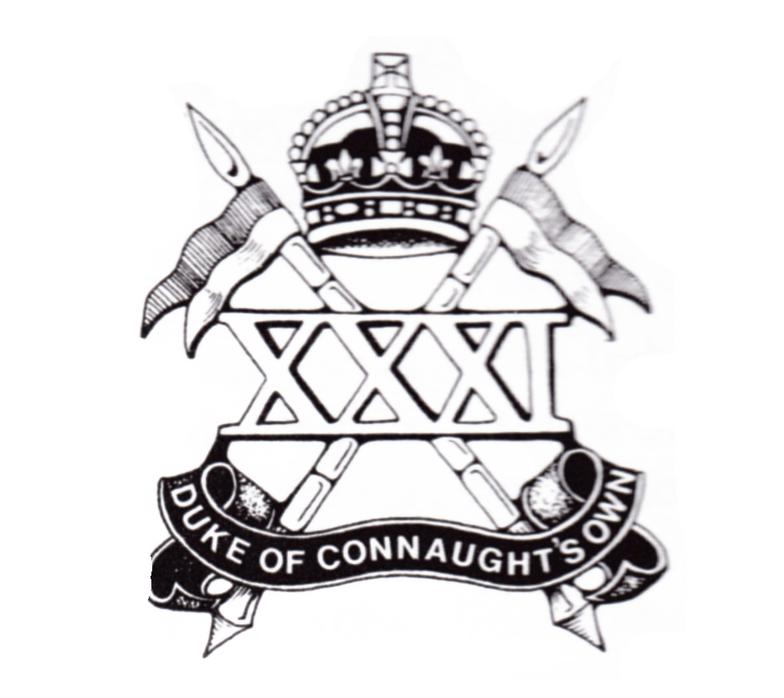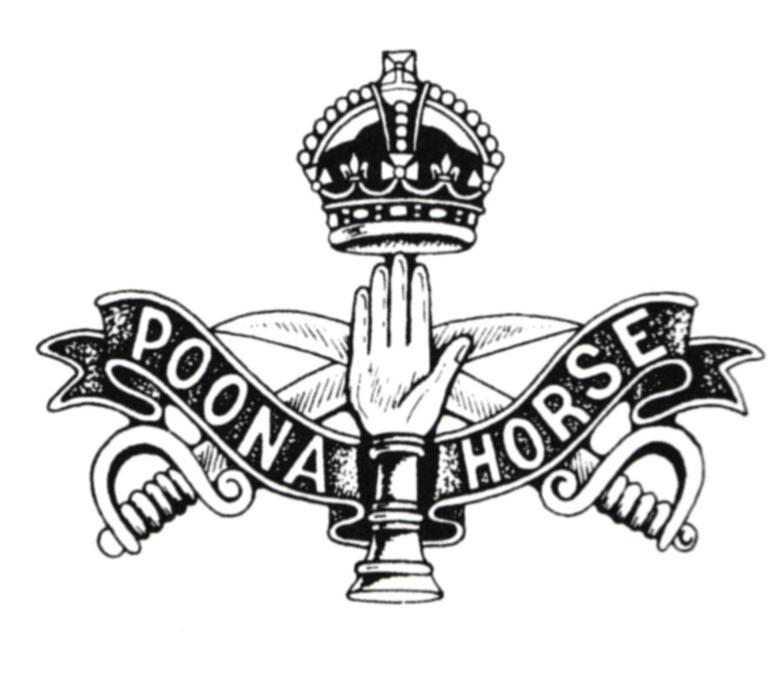Officers of Bombay Cavalry 1895
Captain 1st (Duke of Connaught’s Own) Bombay Lancers
The regiment was raised in 1817 as 1st Bombay Light Cavalry. By 1842 they were designated Lancers. They became “Duke of Connaught’s Own” in 1890.
They took part in the 1st Afghan War of 1842, the Central India campaign in the Mutiny and the Burma War 1885-87. When the Indian Army was unified in 1902 they became known as the 31st Duke of Connaught’s Own Lancers. During the 1st World War they fought in Mesopotamia taking part in the capture of Baghdad and then in the Holy Land. They were merged with the 32nd Bombay Lancers in 1923 to form the 13th Duke of Connaught’s Own Lancers. They served in Iraq and Syria before becoming part of the British 8th Army in October 1942. They later returned to India and after the Japanese surrender took up security duties in Indonesia. After partition in 1947 they became part of the Army of Pakistan and still retain the title 13th Lancers.
The officer in the illustration wears the full dress uniform worn when not parading with the men. It is a typical British lancer uniform in dark green with scarlet facings. In full dress he wore the white foreign-service helmet with coloured puggaree. The scarlet pillbox cap was a feature of the regiment. In the reorganisation of 1903 the uniform colour was changed to dark blue and in 1905 they took the white Wolseley helmet with no puggaree into wear.
Lieutenant 4th Prince Albert Victor’s Own Bombay Cavalry (Poona Horse)
Raised in 1817 and in 1817 designated Poona Auxiliary Horse. In 1862 it was named simply The Poona Horse, a title it would keep for the rest of its existence.
They fought in most of the engagements on the Indian sub-continent during the 19th century. The 1st Afghan War, The Battle of Meanee during Napier’s Sind campaign in 1843. They fought in the Persian War of 1856/7 capturing a Persian standard the Battle of Koosh-Ab. They carried this on parade from that time forward. The silver hand finial from the standard was part of the regiments badge from 1905 onward. In 1903 it became the 34th Prince Albert Victor’s Own Poona Horse. During the Great War the regiment served on the Western Front distinguishing itself at the Battle of Neuve-Chappel in 1915. They later moved to Mesopotamia, then Palestine and were one of the first units to enter Damascus on October 1st 1918. In 1923 the were amalgamated with the 34th Bombay Cavalry to form the 17th Queen Victoria’s Own Poona Horse. In World War II they were part of the British 8th Army and fought at the 1st Battle of El Alamein. They later took part in the Iraq campaign and ended the war in Cyprus. They are now part of the army of the Republic of India.
Like the other officer, this one has a dark green uniform with French Grey facings, this time in the style of British dragoons. In 1903 they again changed their basic uniform colour to dark blue retaining the same facings.
BADGES OF THE REGIMENTS IN 1912







